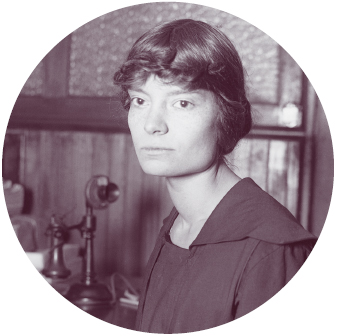Case Study
CASE STUDY
Alternative Journalism: Dorothy Day and I. F. Stone
Over the years, a number of unconventional reporters have struggled against the status quo to find a place for unheard voices and alternative ways to practice their craft. For example, Ida Wells fearlessly investigated violence against blacks for the Memphis Free Speech in the late 1800s. Newspaper lore offers a rich history of alternative journalists and their publications, such as Dorothy Day’s Catholic Worker and I. F. Stone’s Weekly.
In 1933, Dorothy Day (1897–1980) cofounded a radical religious organization with a monthly newspaper, the Catholic Worker, that opposed war and supported social reforms. Like many young intellectual writers during World War I, Day was a pacifist; she also joined the Socialist Party. Quitting college at age eighteen to work as an activist reporter for socialist newspapers, Day participated in the ongoing suffrage movement to give women the right to vote. Throughout the 1930s, her Catholic Worker organization invested in thirty hospices for the poor and homeless, providing food and shelter for five thousand people a day. This legacy endures today, with the organization continuing to fund soup kitchens and homeless shelters throughout the country.
For more than seventy years, the Worker has consistently advocated personal activism to further social justice, opposing anti-Semitism, Japanese American internment camps during World War II, nuclear weapons, the Korean War, military drafts, and the communist witch-hunts of the 1950s. The Worker’s circulation peaked in 1938 at 190,000, then fell dramatically during World War II, when Day’s pacifism was at odds with much of America. Today, the Catholic Worker has a circulation of about thirty thousand.

I. F. Stone (1907–1989) shared Dorothy Day’s passion for social activism. He also started early, publishing his own monthly paper at the age of fourteen and becoming a full-time reporter by age twenty. He worked as a Washington political writer for the Nation in the early 1940s and later for the New York Daily Compass. Throughout his career, Stone challenged the conventions and privileges of both politics and journalism. In 1941, for example, he resigned from the National Press Club when it refused to serve his guest, the nation’s first African American federal judge. In the early 1950s, he actively opposed Joseph McCarthy’s rabid campaign to rid government and the media of alleged communists.
When the Daily Compass failed in 1952, the radical Stone was unable to find a newspaper job and decided to create his own newsletter, I. F. Stone’s Weekly, which he published for nineteen years. Practicing interpretive and investigative reporting, Stone became as adept as any major journalist at tracking down government records to discover contradictions, inaccuracies, and lies. Over the years, Stone questioned decisions by the Supreme Court, investigated the substandard living conditions of many African Americans, and criticized political corruption. He guided the Weekly to a circulation that reached seventy thousand during the 1960s, when he probed American investments of money and military might in Vietnam.

I. F. Stone and Dorothy Day embodied a spirit of independent reporting that has been threatened by the rise of chain ownership, then the decline in readership. Stone, who believed that alternative ideas were crucial to maintaining a healthy democracy, once wrote that “there must be free play for so-called ‘subversive’ ideas—every idea ‘subverts’ the old to make way for the new. To shut off ‘subversion’ is to shut off peaceful progress and to invite revolution and war.”1 